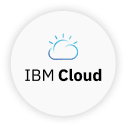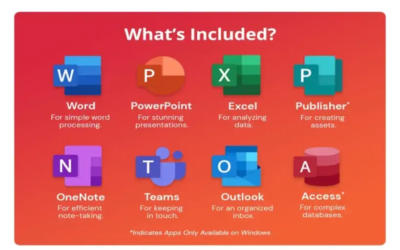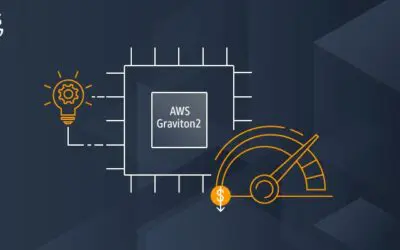Why Opt for Cloud Service Providers?
Cloud computing presents a multitude of benefits crucial for staying abreast of modern-day technology trends. Here’s why partnering with cloud service providers is imperative for your business:
Cost Savings: Cloud computing platforms alleviate the upfront costs associated with servers and hardware, ensuring significant financial savings for organizations.
Speed: With self-serve, pay-as-you-go models, cloud services facilitate rapid provisioning of computing resources, empowering businesses to respond swiftly to evolving demands.
Scalability: Cloud computing offers unparalleled flexibility, allowing organizations to scale resources dynamically based on fluctuating requirements, thereby optimizing operational efficiency.
Security: Leading cloud providers implement robust security measures to safeguard applications, data, and infrastructure from potential threats, bolstering overall cybersecurity posture.
Reliability: Cloud environments ensure high availability and redundancy, minimizing downtime and ensuring uninterrupted access to critical resources.
Download list of all AWS Services PDF
Download our free PDF list of all AWS services. In this list, you will get all of the AWS services in a PDF file that contains descriptions and links on how to get started.
Table of Contents
What are cloud providers?
Cloud providers give you the flexibility to build, manage, and deliver small and large-scale web and mobile applications. With virtual server hosting, they provide you with diverse resources over the internet, such as big data analytics, IoT, compute, and more to streamline development.
Cloud resources are typically offered with plug-and-play capabilities, allowing you to use only what you need, when you need it.
Embracing cloud technology aligns your organization with major players in the tech industry. Numerous online resources, such as Best Bootcamp, offer comprehensive training in coding and cloud computing, enabling you to harness the transformative power of the cloud.
Our Top Cloud Providers 2024
With over 800 vendors worldwide, each with its own unique benefits and aims, we present a few that have made the greatest impact leading into 2024.

1. Amazon Web Services
Amazon Web Services (AWS) is the world-leading cloud vendor with over 200 integrated features and services. AWS offers a free tier that enables you to test various services free of charge and without any commitments.
With 77 Availability Zones and 24 geographic regions, AWS makes up over 30% of the cloud market share.
AWS provides a 12-month free trial to allow users to experience their services without any cost. After the trial period ends, users can choose to move to a paid version to continue accessing AWS services. Additionally, AWS offers credits for startups through webinars, events, and participation in different communities.

2. Microsoft Azure
Like AWS, Microsoft Azure offers an abundance of on-demand computing services designed for efficient building in the cloud.
Azure offers four different kinds of cloud computing: Infrastructure as a service (IaaS), platform as a service (PaaS), software as a service (SaaS), and serverless.
Azure also offers a 12-month free tier, wherein users can create a free Azure account and receive credits to explore any Azure service for 30 days.
Check out our Microsoft Azure analysis.

3. Google Cloud Platform
The Google Cloud Platform (GCP) is an assemblage of services that operates on the same infrastructure used to power Google Search, Youtube, and several other tech behemoth offerings.
Google Cloud Platform provides a 12-month free tier to encourage users to explore their services before committing financially. Developers and startups can apply for the Google Cloud for Startups Program, which offers credits to avail services at affordable prices.

4. Alibaba Cloud
Alibaba is a global leader in the cloud with a focus on security and artificial intelligence. The Alibaba Cloud is the second-largest cloud service provider around the world and powers almost half of China’s 4.97 million websites.
Check out our comparison of Alibaba Cloud and Microsoft Azure.

5. Salesforce
Salesforce offers cloud-based CRM, customer service, marketing automation, sales, and much more. Their customer relationship tools suite can help you grasp a data-driven approach for your business.
Migrating to the cloud?

6. IBM
IBM blends PaaS with IaaS to provide a holistic cloud experience. Like AWS and Microsoft Azure, IBM has an abundance of services to help simplify many software development tasks.
IBM Cloud offers a Lite Tier that provides users with 256MB of Cloud Foundry Memory for trial purposes. Furthermore, their Startup with IBM program supports startups by providing up to $120,000 in free credits.

7. Digital Ocean
Digital Ocean is designed to meet developers’ needs for deploying and scaling applications that run simultaneously on multiple computers. As the third-largest hosting company globally, Digital Ocean has two primary product offerings - compute and storage.
DigitalOcean offers users $50 worth of free credits for 30 days to try their services. After the trial period, users need to pay for the services they use. DigitalOcean also offers Hatch, a program specifically designed for startups to provide free credits.

8. Dell
Dell technology combines the capacity of VMware software and Dell Technologies infrastructure to provide an integrated multi-cloud approach. As a hybrid, multi-cloud provider, Dell focuses its core offering around storage and data protection.

9. Adobe
Adobe Creative Cloud is unlike the other vendors and focuses on the creative sector of cloud computing. With a Software-as-a-Service (SaaS) offering, Adobe provides an array of tools geared towards graphic design, video editing, photography, and more.

10. Dropbox
Dropbox is a robust cloud storage solution designed for various business sizes to store files and documents on a remote cloud server. Dropbox allows users to access any saved data or content from any device with an internet connection.
Cloud Migration Checklist
Text MIGRATE to (415) 890-6431 and receive our FREE 10-step in depth checklist to a cloud migration. Thousands of businesses every quarter fail during their migration, costing them sometimes hundreds of thousands of dollars. Don’t let your migration leave your business in shambles.

11. CloudContactAI
CCAI’s all-in-one integrated SMS platform is designed for businesses to send text messages en masse with ease. Use artificial intelligence to have real-time, two-way discussions with your customers via voice, email, SMS or MMS.
Where to learn about cloud computing
All of these cloud providers are working to revolutionize how we use technology. Most major organizations are already connected with the cloud; therefore, adapting this technology can position you alongside some of the major players in big tech.
There are many online services available to teach you about coding and cloud, such as Best Bootcamp. By putting your best foot forward in cloud education, you can join the cloud computing revolution, too.
How to choose a cloud provider partner
Failed migrations to the cloud can damage your business and drain your bank account. Without a cloud provider well established in careful management of cloud infrastructure, your organizational integrity is exposed to severe, multi-level risk.
Understanding your goals
Before committing to a partner to guide your cloud journey, you need to ensure that they possess the technical expertise to fulfill your requests. If their requisite knowledge is bona fide, and you trust them to bring your concept into fruition, then you may consider inviting them to carry out your company’s vital project.
Expertise
Many of these cloud providers offer certifications for achieving various milestones. One of the first things on your checklist should be vetting their accomplishments.
You could ask to see any certifications or ask them questions to see if they meet your standards. Either way, by applying a few safeguards in your assessment process, you can easily sift out the bad seeds.
Multi-vendor relationships
A partner with various vendor relationships will help you take advantage of several cloud offerings. Rather than being complacent with a single vendor’s services, you can specify the offering that fits your specific requirements and choose accordingly.
Cloud Service Provider Partner
AllCode is a cloud partner with multi-vendor relationships, providing you with a wide range of options to choose from. We understand that selecting the right cloud service provider can be a challenging decision. That’s why we believe in taking a comprehensive approach to ensure that your unique requirements are met.
With years of experience and trusted relationships with our vendors, AllCode has become a preferred option for companies of all sizes. Our deep expertise and certifications from AWS, the leading cloud vendor globally, validate our ability to develop, deploy, manage, and scale workloads in the cloud.
However, we also recognize that there is no one-size-fits-all solution when it comes to cloud service providers. That’s why we encourage you to thoroughly understand your specific needs and perform a cost-benefit analysis among the various cloud service providers available. This analysis will help you assess the features, pricing, and support options that align with your requirements and objectives.
At AllCode, we are committed to making your cloud journey swift and successful. By leveraging our multi-vendor relationships and expertise, we can guide you in selecting the best service offerings across various cloud providers. Our goal is to ensure that you benefit from all that the cloud has to offer in the most cost-efficient way.
Get in touch with us today and let us help you navigate the complex landscape of cloud service providers. Together, we can determine the best fit for your organization, making your cloud journey not only lofty but also tailored to your unique needs.
Related Articles
Top Software as a Service Companies in 2024
Spending for public cloud usage continues to climb with every year. In 2023, nearly $600 billion was spent world-wide with a third of that being taken up by SaaS. By comparison, Infrastructure as a Service only takes up $150 billion and Platform as a Service makes up $139 billion. On average, companies use roughly 315 individual SaaS applications for their operations and are gradually increasing on a yearly basis. SaaS offers a level of cost efficiency that makes it an appealing option for consuming software.
AWS Graviton and Arm-architecture Processors
AWS launched its new batch of Arm-based processors in 2018 with AWS Graviton. It is a series of server processors designed for Amazon EC2 virtual machines. The EC2 AI instances support web servers, caching fleets, distributed data centers, and containerized microservices. Arm architecture is gradually being rolled out to handle enterprise-grade utilities at scale. Graviton instances are popular for handling intense workloads in the cloud.
What is Tiered Pricing for Software as a Service?
Tiered Pricing is a method used by many companies with subscription models. SaaS companies typically offer tiered pricing plans with different services and benefits at each price point with typically increasing benefits the more a customer pays. Striking a balance between what good rates are and the price can be difficult at times.


A self-motivated digital marketing specialist with 3+ years of experience advertising in the financial services industry.
While I wear several marketing hats, my primary focus is on content strategy and curation.
I aim to consistently challenge myself and position my skills toward personal and professional endeavors that lead to measurable results.



